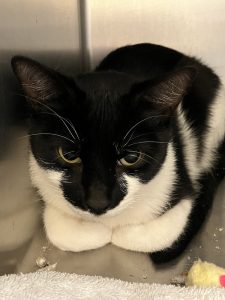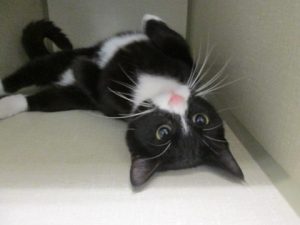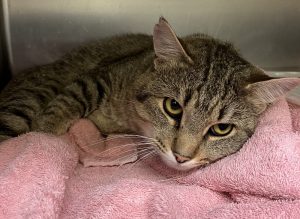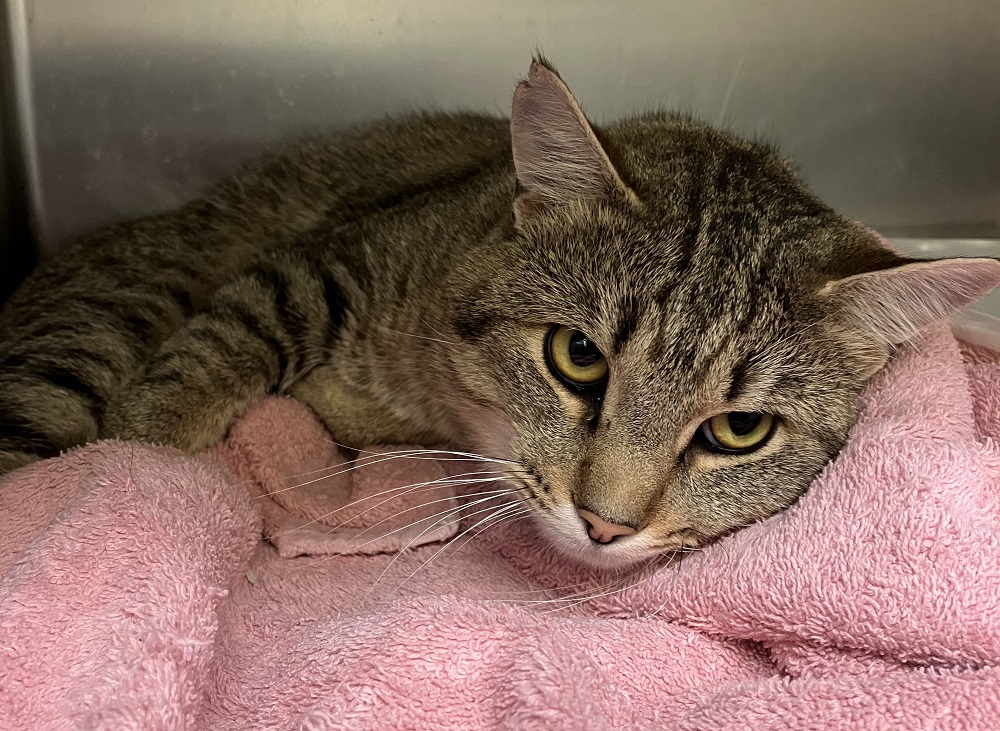Not sure what to do with feral cats in your neighborhood? Maybe you’ve been feeding them but are just tapped out. Maybe it started with one, but now there are six and that’s just too much. Joint Animal Services has adopted a Community Cat Program throughout Thurston County that answers all your needs and saves feral cats’ lives.
Trap Neuter Return

Trap Neuter Return (TNR) programs have been around for decades in other places, explains Sarah, executive director at Joint Animal Services. “It’s a re-envisioning of the Trap Neuter Return program that’s been around for so long,” she adds. “And it got kind of rebranded several years ago as a Community Cat Program instead, because what they were finding is that the community actually really cares about these animals.”
Before TNR programs, there weren’t many options for feral cats. Most were trapped and euthanized, which Sarah notes does not actually solve the problem. “It doesn’t work because everything operates in a vacuum,” she says. “And so more cats – different cats – would come in and replace them because there’s a food source. And, you’re kind of breaking that trust with the community as well. They don’t want to see these cats killed. They want to help them, but they’re not sure how. It’s really about offering resources for the community to help so everybody’s happy in the end.”
With a Community Cat Program, cats are trapped, neutered or spayed so they don’t keep adding to the population, vaccinated, and then released back to their neighborhood. One of the cat’s ears is tipped so people can quickly tell it’s a Community Cat that’s already been altered.
Because TNR programs have been around for a while, there are numbers to prove it works. “There’s lots of studies that have been done, so it’s scientifically proven to work,” Sarah shares. “Reducing the population, and then maintaining the smaller healthy colony, keeps other cats from coming into their territory. And since they’re spayed and neutered, it reduces all those problematic behaviors that people complain about as well, like the howling and spraying.”
What To Do With a Feral Cat in Thurston County

Do you have a feral cat or two hanging around your neighborhood? If so, you can call Joint Animal Services at 360.352.2510 and they’ll help guide you through the steps. The first of which is to make sure the cat is indeed feral and not being taken care of. If it is a feral cat, you can use a live trap to catch it – Joint Animal Services has traps for rent – and then bring the cat to them.
From there, the cat will be assessed. Is it friendly and possibly a good candidate for adoption into a home? Is it semi-tame and suitable for work in the Barn Cat Program? If no to either of these, the cat will become a Community Cat, and will be altered, vaccinated, and ear tipped. You will then be called to pick up the cat for release back into your neighborhood.
This is all at no cost to you! Joint Animal Services received a $18,000 grant from Best friends Animal Society, another nonprofit animal rescue organization, to start up and fund the Community Cat Program. This money is currently covering the cost of alterations, vaccines, and ear tipping.
Joint Animal Services also has programs that can help if you need food or other supplies to care for your Community Cats.
Community Cat Program Requests Change of Codes
One part of the Program’s mission is to change municipal codes in Lacey, Tumwater, Olympia, and Thurston County as a whole, to reflect these new cat stewards. Called Community Cat Caregivers, Sarah says the language needs to be changed to reflect that these people are not actually owners of the cats. “Currently, if you feed or house a cat for 14 days, you become the owner of that cat,” explains Sarah. This means you would be responsible for the cat and could be held accountable for anything that cat does, for example damaging neighbor’s property or being a nuisance with noise. You would also have to pay to license that cat, yearly.

Joint Animal Services has proposed to Lacey, Tumwater, Olympia, and Thurston County that the verbiage in the codes be changed, to reflect the difference between a pet owner and a Community Cat Caregiver. The new definitions would be:
“Community cat means any free-roaming cat that may be cared for by one or more residents in the area, known or unknown. Community cats with ears tipped were sterilized and vaccinated against rabies at least one time. Community cats are not considered pet animals.
Community cat caregiver means a person who provides care to a community cat in the form of food, water, shelter, and veterinary care, while not being considered the owner, custodian, harborer, possessor, or keeper of a community cat.”
In addition, they are asking for clarifying verbiage in the licensing and registration requirement to specifically say “pet animal” and not just “dog or cat.”
You can help by contacting your City Councilmembers and the Thurston County Board of County Commissioners and showing your support for the change in codes.
Businesses and individuals can also donate money and in-kind donations such as food or supplies to the Community Cat Program. Volunteers are always welcome at the shelter as well. “One of our volunteer positions is to be a transport driver,” shares Sarah, “to help transport cats for surgery. As our program grows, we’ll be opening up more volunteer positions to assist with our Community Cat Program. So, in the future, there might be volunteer positions that help with trapping, help talk with the neighborhoods, and work with the communities to find out what their needs are.”
For more information, visit the Joint Animal Services website.
Sponsored





















































